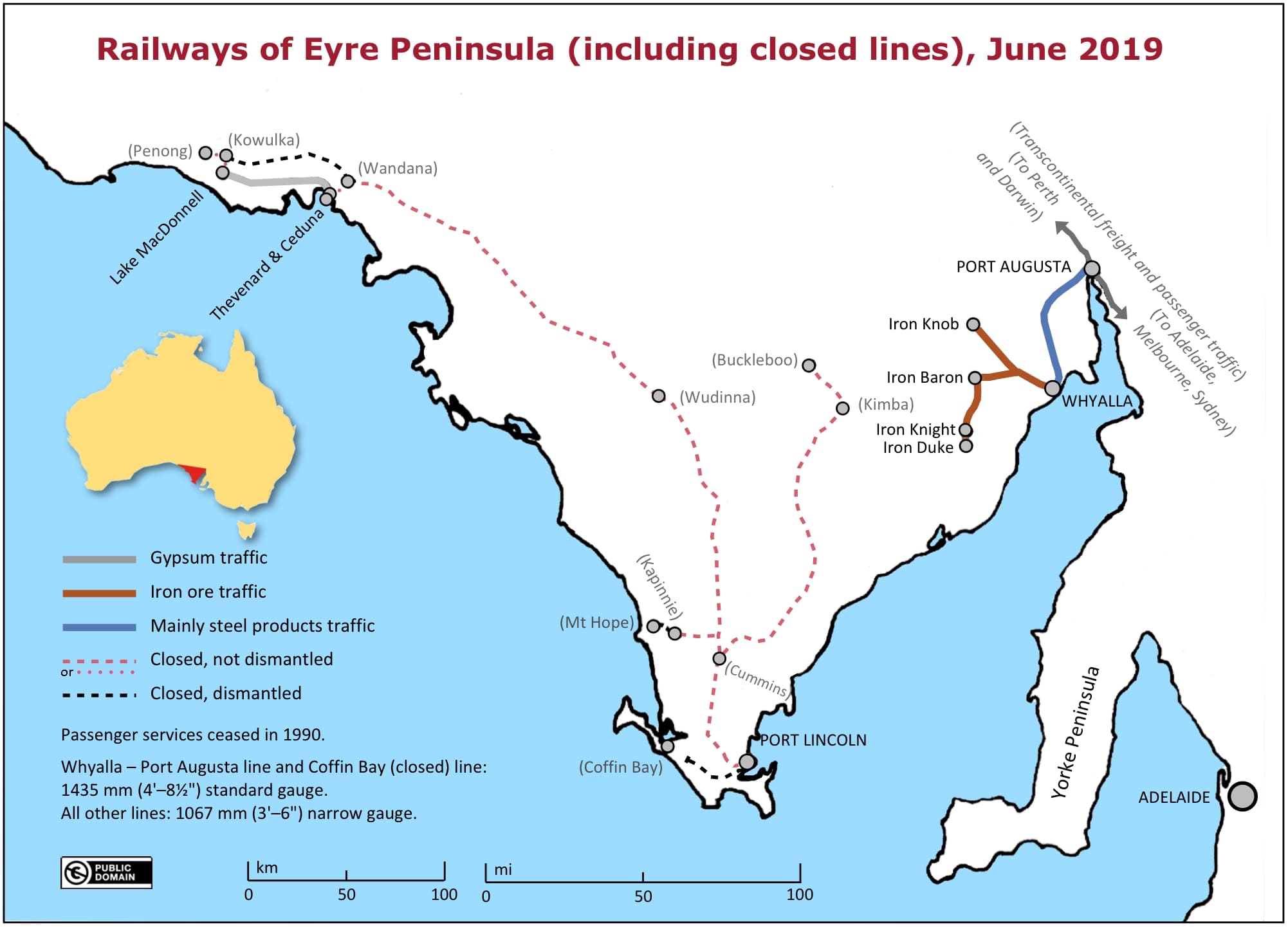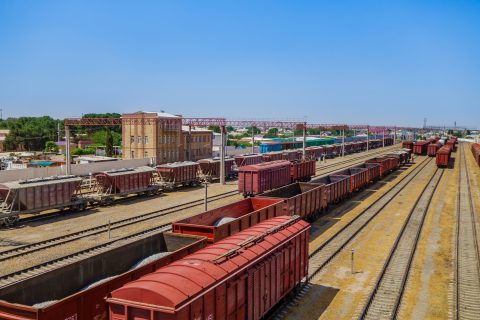Aurizon and Viterra want to reopen a railway network in South Australia

Australian rail freight company Aurizon and Viterra, an agricultural group, have asked the country’s federal government to upgrade and reopen a railway network in South Australia. Reopening the network, according to the companies, would benefit the agricultural sector in the Eyre Peninsula and its export.
The network in question is part of the so-called Eyre Peninsula railway and involves three railway sections. The first one runs northward for around 60 kilometres from Port Lincoln, on the tip of the Eyre Peninsula, with Cummins. The two other sections connect Cummins to Kimba in the east and Wudinna in the west. Viterra ceased to use the railway network in 2019 “due to the condition of the line and the restrictions it placed on operations”. Aurizon and Viterra have now submitted a formal application to the Australian federal government for funding for the upgrade and reopening of the Eyre Peninsula rail network.
Disclaimer: the section past Wudinna and the one between Kimba and Buckleboo shown on the map were not included in the proposal.

The railway needs upgrade before reopening
As Viterra pointed out, the planned upgrades revolve around “increased axle weights, improved travel speeds and more reliably in the warmer summer period”. Moreover, the project would entail the implementation of fast rail outloading infrastructure to speed up the loading process from silos to trains. The inloading infrastructure at Viterra’s terminal in Port Lincoln also needs to be improved, according to Viterra, to reduce turnaround times and increase rail capacity to load vessels faster.
Both companies pledged long-term commitment if the federal government approves the funds to upgrade and reopen the network. Aurizon said it will maintain the line and invest in rolling stock. Viterra assured it would move at least 1.3 million tonnes of grain on the rail network each year. According to Viterra, reopening this network would remove 42,000 trucks from the roads every year.
Also read:





When standard of infrastructure, not sufficiently is upgraded (even worse not upgradable…) and no longer provides, for high quality of service rendered (when willingly paying clients not are present) then, regardless nostalgic, etc., decisively a stop (temporary) is pragmatic and correct.
Now, regrettably short of redundancy (robustness) railways seriously have “missed train”.
A New Old Railway, a redundant (ensuring sustainability and “height” for future added load, etc.) now is needed!
,